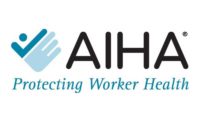Health protection + health promotion = healthier workforce, says study
A healthier workplace may be a safer workplace

Titled “Workplace Health Protection and Promotion: A New Pathway for A Healthier — and Safer — Workforce,” the paper was conceived and written by a task force from the American College of Occupational and Environmental Medicine (ACOEM) seeking a new organizational model that would unite the activity centers of workplace safety and workplace health and wellness — which are currently often put in silos by employers.
“Traditionally, health protection and health promotion activities have been viewed as two distinct activities and have operated independently of each other in the workplace,” the paper states. “Placing boundaries around these activities (creating workplace ‘silos’) has been a limiting factor in their overall effectiveness.”
The paper calls for a new way of approaching these two vital activity centers, one that will integrate them into a concept called “workplace health protection and promotion.”
The two have yet to meet and merge
“This is the path to creating a healthier workforce,” said Pamela Hymel, MD, the paper’s lead author and a past president of ACOEM. “While we have made great strides in creating separate cultures of safety and wellness in the United States in recent decades, the two have yet to meet and merge into a truly sustainable culture of health.”
The paper argues that the workplace health protection and promotion concept can address this limitation by systematically integrating these two previously independent functions, enhancing the overall health and well-being of the workforce while decreasing the likelihood of workplace injuries and illnesses. “Today’s best evidence indicates that the aims of both health protection and health promotion interventions are best achieved when they are working in concert,” according to the authors.
The paper defines health protection as encompassing the activities that protect workers from occupational injury and illness — ranging from basic safety training to the use of protective gear, work organization, and safety enhancing modifications to equipment. Health promotion, by contrast, is viewed as encompassing the activities that maintain or improve the personal health of a workforce — ranging from health-risk assessments to wellness initiatives and immunizations.
The whole becomes greater than the sum of its parts
Citing a diverse range of literature, the authors advance the theory that workplace health protection and promotion programs can enhance the overall well being of a workforce by more closely integrating health promotion and health protection activities along a continuum. “In this model, health promotion interventions contribute dynamically to improved personal safety in addition to enhancing personal health, while occupational safety interventions contribute dynamically to improved personal health in addition to enhancing personal safety,” the authors write.
“The two factors, personal health and personal safety – each essential to a productive worker and to a productive workplace — are effectively combined in a symbiotic manner way that increases their impact on overall health and productivity. The whole becomes greater than the sum of its parts,” they add.
While much evidence already exists to prove that a safer workforce is a healthier workforce, the authors call in the paper for more research to substantiate evidence that suggests a healthier workforce may be a safer workforce.
In the meantime, according to the authors, employers should consider systematically integrating their health promotion safety and environmental programs, policies, and processes. Activities incorporated in workplace health protection and promotion are diverse and reflect a wide range of functions and goals. Examples include assessing worker health status, addressing personal health risks, the early recognition and treatment of injury or illness, job safety initiatives and efforts to create cultures of health and safety, disability prevention and return-to-work programs, emergency preparedness planning, and behavioral health and environmental safety initiatives.
“While these may appear to be diverse approaches, they are all aimed at the same thing: promoting overall health and preventing workplace injuries and illnesses,” Dr. Hymel said.
In addition to its publication in JOEM, ACOEM is circulating the paper among policymakers and other stakeholders in an effort to raise awareness of this topic. To read the paper, go to www.acoem.org/uploadedFiles/Public_Affairs/Policies_And_Position_Statements/Guidelines/Guidelines/Workplace%20Health%20Protection%20and%20Promotion.pdf.
Looking for a reprint of this article?
From high-res PDFs to custom plaques, order your copy today!








